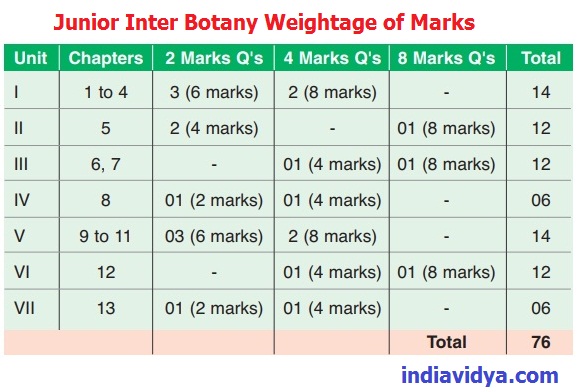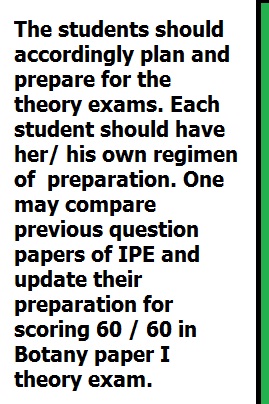 Mathematics Syllabus of two-year Intermediate course is divided into four papers in the form of Paper-A and Paper-B for each year. Accordingly Text books also were printed by Telugu Akademi in the form of four books, two books for each year. Hence, students are advised to study the books for a good score in Mathematics.
Mathematics Syllabus of two-year Intermediate course is divided into four papers in the form of Paper-A and Paper-B for each year. Accordingly Text books also were printed by Telugu Akademi in the form of four books, two books for each year. Hence, students are advised to study the books for a good score in Mathematics.
Let us first look at the chapters involved in the paper-B.
Coordinate geometry:
1. The Locus
2. Transformation of Axes
3. The Straight line
4. Pair of Straight lines
3- Dimensional coordinate geometry:
5. Three Dimensional Coordinates
6. Direction cosines and Direction Ratios
7. The plane
Calculus:
8. Limits and Continuity
9. Differentiation
10. Applications of Derivatives
Calculus is problem oriented:
Having noted the contents of the syllabus, Students are now advised to plan their study programme for a better score in the annual examinations. It may be reminded in this context that students may need 27 out of 75 for a pass mark, 47 for a first class mark and 67 for distinction marks in any paper. In this paper, ‘Coordinate geometry’ and ‘Calculus’ are the two important units. While ‘Coordinate geometry’ is a theoretical unit, ‘Calculus’ is a problem oriented one.
Locus:
If we look at the chapterwise analysis in Coordinate geometry, the first chapter ‘Locus’ is quite simple and easy. Many a geometric figure is constructed based on the concept of locus only. Students in classrooms will follow their chapter easily and score marks with minimum effort. Various problems ahead are solved using the definition of Locus in the next chapters that follow. It may be mentioned that an equation of Locus is an algebraic description of the Locus. Their concept is well understood by students while solving the problems.
Transformation of Axes:
The second chapter ‘Transformation of Axes’ is also easy in marks scoring point of view. The rules relating to transformation of axes are to be remembered while attempting the problems. ‘Translation of axes’ is applied frequently with regard to some derivations in other chapters of coordinate geometry.
Students are advised to solve all the problems in the exercise ‘2’. A short answer type question is expected in the final examination from this chapter.
The Straight Line:
The third chapter ‘The Straight Line’ in paper-1B is of very much importance and significance. This chapter revolves round various definitions, formulae and derivations. Various forms of a straight line are discussed in detail. Translation of axes rule studied in the previous chapter is applied to find the length of the perpendicular of a given line from a given point.
The study about the concurrent lines leads to the study of properties related to a triangle.
The derivations of centroid, Orthocentre, Circumcentre and in-centre are very much important both in terms of theory and problems
based on them. All the exercise problems and solved problems deserve attention by the students for gaining perfection in this
chapter and in the examinations.
Pair of Straight Lines:
Having studied about a straight line in detail, students may not feel it difficult to study about two straight lines at a time. This study is nothing but the study of the chapter “Pair of Straight Lines” which is the succeeding chapter. So, we can say that this is an extension of the previous chapter. This chapter involves many a
theorem. Students must thoroughly practise all the solved problems and also all the problems of exercises 4(a), 4(b), 4(c) of the akademi text book. This is, in fact marks fetching chapter as far as the examinations are concerned. Two essay type questions are being set every year in the public examinations. In this context, students are advised to cultivate the habit of theory based study for the purpose of a bright academic future.
‘Three Dimensional coordinate geometry’ includes the study of ‘Three dimensional coordinates’, ‘Direction cosines and direction
ratios’ and ‘The plane’. This is relatively an easier unit and students can get more marks with minimum efforts.
Calculus:
Now, let us start analysing the other important unit ‘CALCULUS’ of paper-IB. ‘Calculus’ deals with real valued functions which are algebraic and non-algebraic. Algebraic functions include polynomials, rational and irrational functions. Non-algebraic functions include trigonometric, inverse trigonometric, logarithmic and exponential functions. Non-algebraic functions are also termed as ‘Transcendental’ functions.
The concepts of intervals and neighbourhoods are very much useful in studying ‘limits and continuity’ of functions. Sandwich theorem,
left hand and right hand limits play a vital role in observing the existence of limits of real valued functions. Theorems on standard limits must be studied regularly to make problem solving methods easier. Students must also understand thoroughly one of the most important concepts of mathematical analysis, namely, the continuity of a function at a point and on a set. They are also advised to interpret geometrically the left and right continuities of functions at given points.
Differentiation:
‘Differentiation’ forms a basis for the fundamental concepts like velocity, acceleration, the slope of a tangent to a given curve and so on. Various methods exist in differentiation and each and every method is important. Today not only mathematics but many other subjects such as Physics, Chemistry, Economics and Biological sciences are enjoying the fruits of Calculus.
Applications of Derivatives:
‘Applications of Derivatives’ is the last chapter in paper – IB. Concept of differentiation is widely discussed with regard to the various characteristics of functions. The applications of differentiation include
i) errors and approximations
ii) geometrical interpretation of the derivative
iii) equations of tangent and normal to a curve at a given point
iv) lengths of tangent, normal, subtangent and subnormal
v) angle between two given curves
vi) derivative as a rate of change
vii) maximum and minimum values of a function.
All the above conclude that this is a lengthy chapter and hence carries more weightage of marks. Students are advised to be perfect with every item of the chapter for a good aggregate of marks in public examinations.

